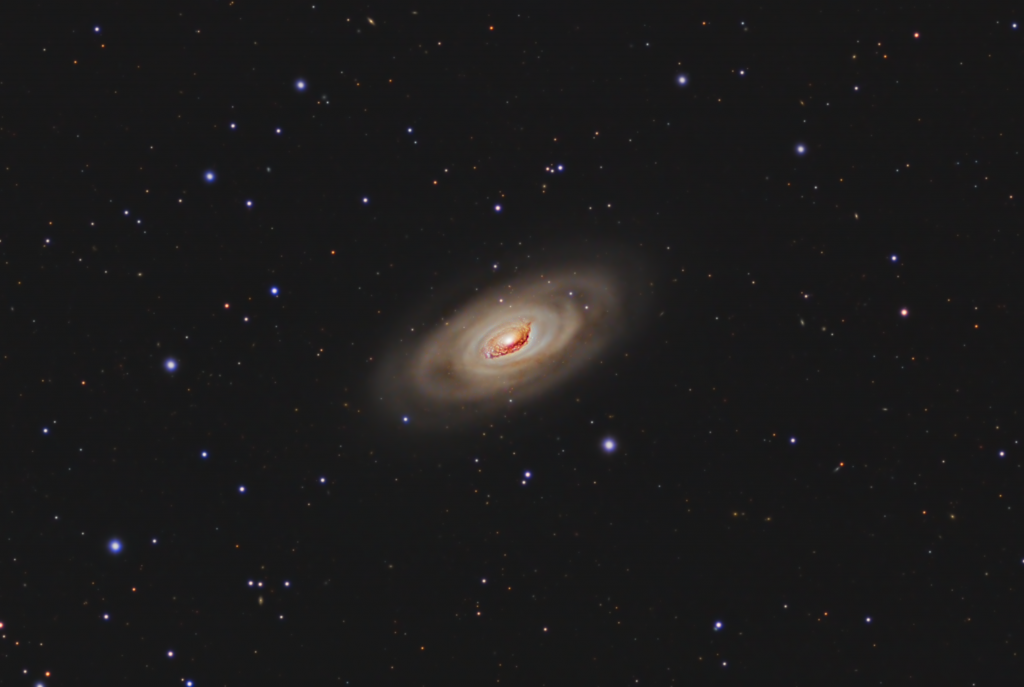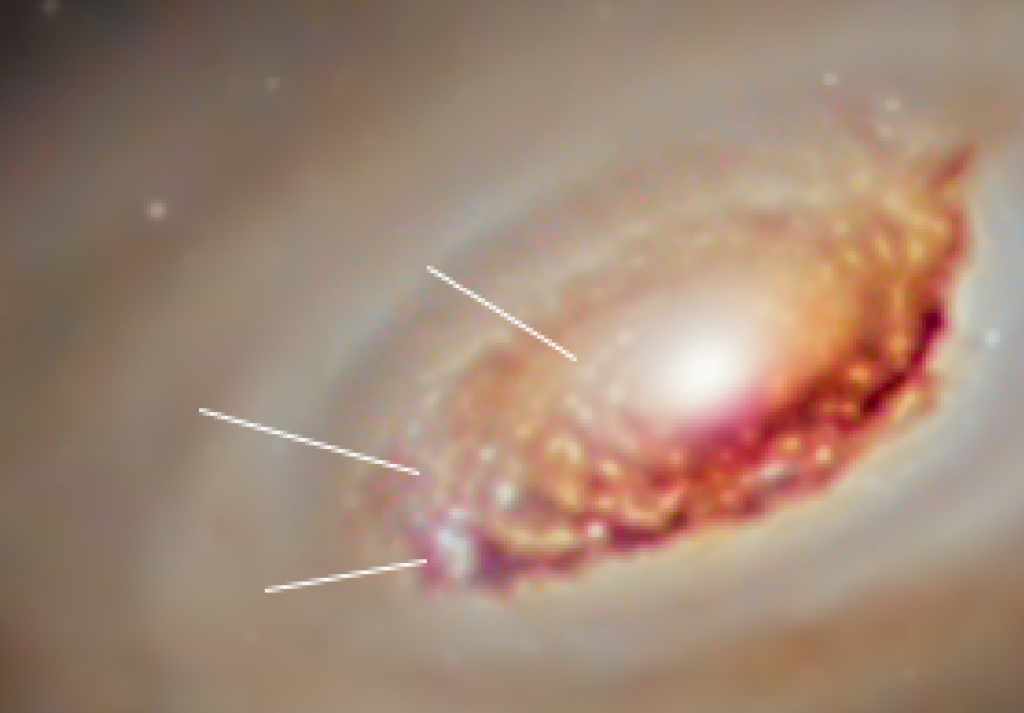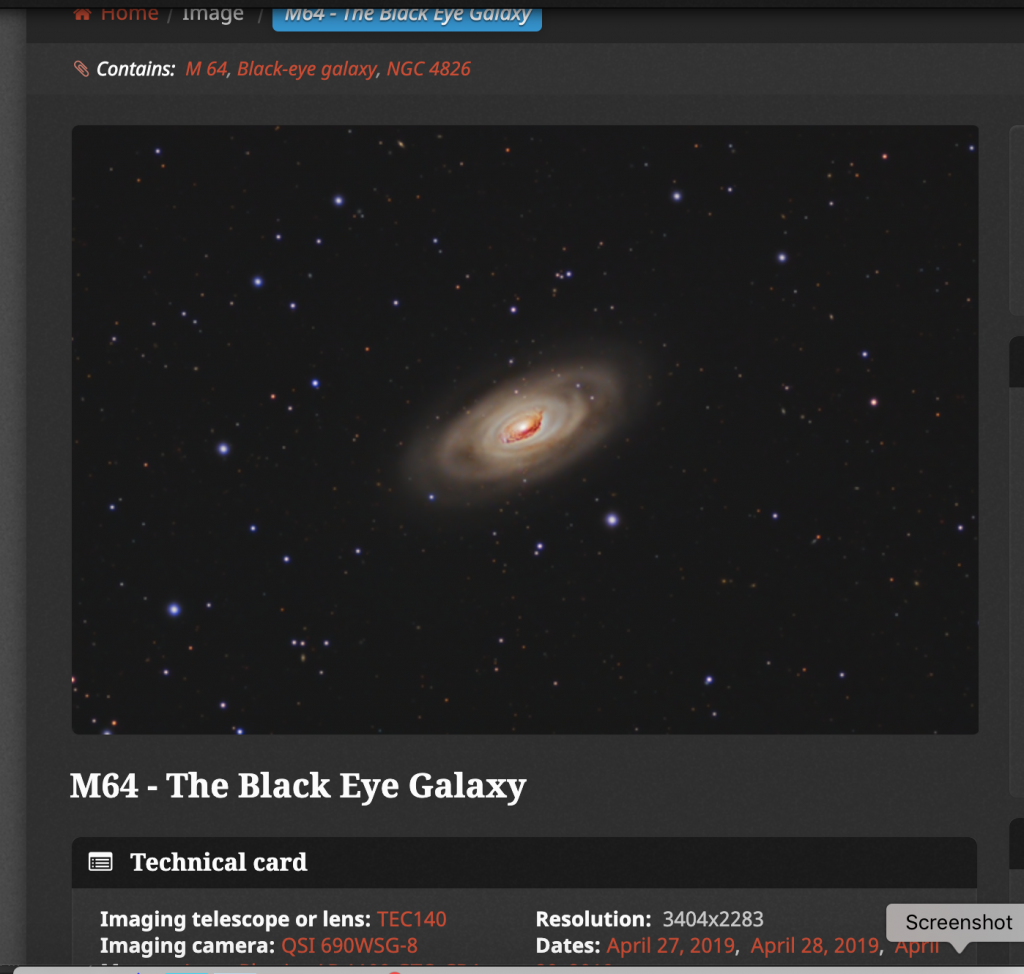Note: For images in posts, you can often click on the image to view and enlarged version, and often, clicking on that enlarged version will zoom in even further. Eventually, to return to this article, use your browser “back” button.”

During the April new moon (2019), I traveled to Chiefland Astronomy Villiage in Florida and had several nice nights of data collection in a row! While there, Josh joined me and we worked on imaging M64. He imaged a very wide field version trying to capture IFN (Integrated Flux Nebula) and I captured a more close in version.
For more technical details and capture information, head over to my page on Astrobin.
And here is a link to the image that Josh put together from that trip (also on Astrobin).
M64 is located in the constellation Coma Bernices or more crudely, sort of “below” the handle of the Big Dipper. Its nickname of the Black Eye galaxy likely originated from its appearance during visual observations more than as a result of astrophotography. It is located only 17 million LY away, so it is pretty close to us (in space distances). An unusual feature of M64 is that gas in the outer regions of the galaxy is rotating in the opposit direction for gas and stars in the inner part of the galaxy. This is thought to be the result of a billion year old encounter with another galaxy. This kind of disruption tends to cause star formation and there is a lot of evidence of this in M64.
In the extreme closeup (400%) of the core of my image I have indicated a few of the star forming regions that are just barely starting to be resolved. I am pretty pleased to see some of these details…

Prior to this image, I used CCDStack and PhotoShop for processing. More recently, I switched to PixInsight for calibration and other linear processing followed by non-linear processing in PhotoShop. This image, however, represents the first where most of the processing was done Pixinsight.
Specifically, I found that the details of the core of the galaxy and details of the arms of the galaxy were enhanced at rather different settings in HDRMT. Further, for the core I used a technique of processing on a preview which contains only the galaxy, itself, then replacing the core of the larger image with the preview. Then I combined the images (one with a nicely detailed core and the other for everything else) in photoshop by layering them and then painting on a mask that allowed the detailed core to come through in a controlled way. There may be a way to do this in PixInsight, but I couldn’t figure it out.
I guess that is about it. If you have questions, feel free to ask at my Astrobin page! Thanks for looking.

